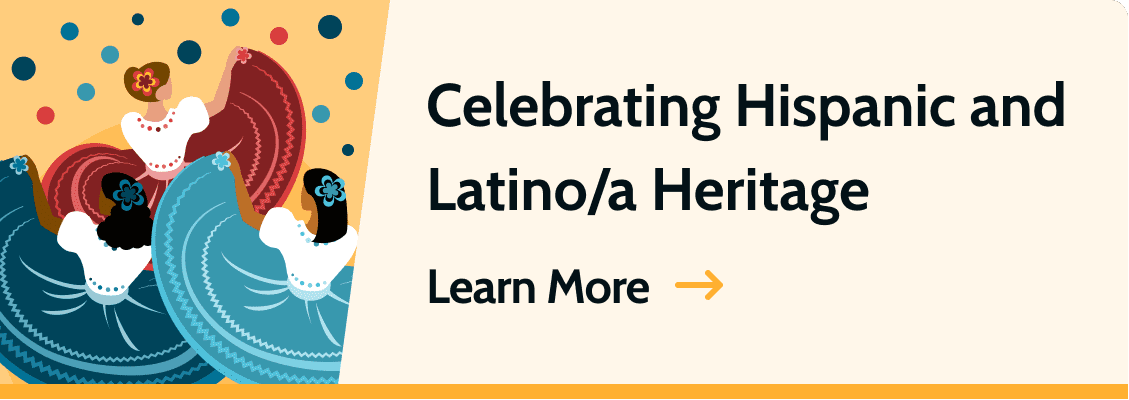7 Hispanic Heritage Month Facts Students Should Learn About
- Hispanic Heritage Month is observed from September 15 to October 15 every year.
- This occasion celebrates Hispanic people in both the U.S. and Hispanic countries.
- Hispanic Heritage Month began as a weekly celebration in 1968 and was expanded in 1988.
- There are a variety of resources and events for those commemorating the occasion.
Hispanic Heritage Month is full of festivals, events, and activities, but what does it really celebrate? While Latino/a and Hispanic cultures are important and celebrated every day, they are particularly marked and recognized during one month each year.
From September 15 to October 15, this important month-long event recognizes the contributions, histories, and cultures of Americans who hail from 20 countries and territories across the globe. What was once just a week-long celebration 50 years ago is now a month-long observance, uniting one of the largest groups in the United States.
1. Hispanic Heritage Month Was Once a Week-Long Celebration
On September 17, 1968, President Lyndon B. Johnson signed Proclamation 3869, officially creating Hispanic Heritage Week. The goal was to honor the positive and widespread impact that people of Hispanic descent have on the United States.
President Johnson’s description of the subject’s purpose may be seen as racially insensitive by 2022 standards, as it implies that people only have value if they contribute to the U.S., but the initial intent to celebrate Hispanic heritage was a good one.
In the proclamation, President Johnson implored people, especially teachers, to create a celebratory curriculum to educate people about Hispanic accomplishments.
This was three months after George E. Brown — a congressman from California — introduced legislation to celebrate such a week, thanks to the Hispanic constituents in his district. Congress passed the bill on September 17, leading to the president’s proclamation.
2. Hispanic Heritage Week Expanded to a Month in 1988
Hispanic Heritage Week became Hispanic Heritage Month under President Ronald Reagan in 1988. This change was initiated by Esteban Torres, another California congressman. He created H.R. 3182, which proposed the extension to a month-long period.
Although this bill didn’t make it out of the House of Representatives, Illinois Senator Paul Simon picked up the slack and introduced S. 2200 to the Senate — a comparable piece of legislation. This amended the original bill that first created Hispanic Heritage Week.
Fortunately, this legislation managed to make it to the desk of President Reagan, who signed it on August 17, 1988. And on September 14, 1989, President George H.W. Bush issued Proclamation 6021, making the extension official.
The history of the movement is important, but it is important to note that Hispanic culture is a vital aspect of American culture as a whole. While a month-long celebration is a great way to highlight Hispanic heritage in the U.S., the culture and peoples are worthy of recognition every day of the year.
3. Hispanic Heritage Month Embraces a New Theme Every Year
Every year a voting process led by the National Council of Hispanic Employment Program Managers (NCHEPM) determines the theme. To ensure the inclusion of many voices, voting participants include NCHEPM members, representatives from federal agencies, and the public.
2023’s winning theme is “Todos Somos, Somos Uno: We Are All, We Are One,” which was submitted by Jennifer Lasko — a diversity, equity, inclusion, and accessibility advisor at the U.S. Treasury. She wanted to acknowledge the differences each group brings to the table while encouraging communities to stand as one community, one people, one vision,
despite differences in their cultures, skin colors, and points of view.
4. Why Hispanic Celebration Month Begins on September 15
It may seem odd for National Hispanic Heritage Month to start in the middle of September and end in the middle of October. But there is a good reason for the September 15 kick-off date.
Several Latin American countries observe their Independence Day on this date. They include El Salvador, Honduras, Costa Rica, Guatemala, and Nicaragua, all of which are located in Central America.
To the north, Mexico celebrates Independence Day on September 16, and to the south, Chile commemorates its sovereignty on September 18. Finally, Dia de la Raza — a decolonized alternative to Columbus Day celebrated by Mexico and Chile — occurs on October 12.
5. Hispanic Heritage Month Represents the Culture and Interests of Both Hispanic and Latino/a People
Hispanic Heritage Month also celebrates people living in the United States who have ancestors in the above countries, which is what makes them Hispanic. This term was first coined in the 1970s after the Census was created.
Then, in 1976, the U.S. government began collecting data about people’s ethnicities, and the term was added to official documents as a recognized category. Later, Latino/Latina emerged as an ethnic descriptor, as some felt Hispanic was too colonized.
There is also the term Latinx, which rejects the gendered nature of the terms Latino/Latina. However, some people are reluctant to adopt this word since colonizers of North, Central, and South America brought the letter “x” to the Spanish language. Latine and Latin@ are other similar terms that have started to gain popularity in recent years.
The terms Hispanic and Latino/a can cover linguistic and geographic origins. Hispanic typically refers to people who speak Spanish or people from a Spanish-speaking country. Alternatively, Latino/a usually refers to people specifically from Latin America, which includes people from Brazil (where Portuguese is the official and national language).
Depending on personal preferences, someone with ties to Hispanic or Latino/a countries may identify with one or both of these terms.


6. 1 in 5 People in the United States Identifies as Hispanic
In the most recent U.S. Census (2020), 62.6 million people self-identified as Hispanic, making this group the largest racial-ethnic minority. With 18.9% of the total population, this is a significant increase from the 13% of the 2000 Census. Projections indicate that by the year 2060, 27.5% of the U.S. population will be Hispanic.
As of 2021, 13 states have a Hispanic population of over 1 million people. These include not only southern border states like Arizona, California, New Mexico, and Texas, but also Colorado, Florida, Georgia, New Jersey, New York, North Carolina, Pennsylvania, and Washington.
7. Famous Hispanic Americans
This month-long celebration is as good a time as any to learn about notable Hispanic Americans. Here are just a few to get you started:
- Roberto Clemente, born in Carolina Municipio, Puerto Rico, was a Major League Baseball player for the Pittsburgh Pirates. He was the first Hispanic American starter to win a World Series.
- Ellen Ochoa was born in Los Angeles, California. She was the first Hispanic American woman astronaut to go to space on a nine-day mission.
- Selena Quintanilla-Perez was born in Lake Jackson, Texas. She is an American icon and remains one of the most celebrated Tejano singer/songwriters to this day.
- Sonia Sotomayor was born in Bronx County, New York, and she was the first Hispanic American to sit on the U.S. Supreme Court.
The Reason We Celebrate Hispanic Heritage Month
Celebrating Hispanic Heritage Month allows us to celebrate the diversity of America’s story. There are ample ways you can share in the month-long celebration, from attending campus-sponsored activities, going to food festivals, or seeking city-wide events.
You also might choose to tune into podcasts like Latino USA or catch up on some reading with amazing books like Texas Poet Laureate Lupe Mendez’s “Why I Am Like Tequila” or Herman Diaz’s Pulitzer-winning novel “Trust.”
Another way to depth-charge your knowledge of Hispanic culture is to hold a watch party and binge some comedy with Fluffy (Gabriel Iglesias) or watch movies like the recently released “Blue Beetle.”
Explore More College Resources

College Guide for Hispanic and Latino/a Students
Unique challenges may shape college experiences for Hispanic and Latino/a students. Learn more with our college guide for Hispanic and Latino/a learners.

by Nalea Ko
Updated July 24, 2023



